This Design-forward Resort Town in Japan Is the Perfect Mountain Retreat — and It's Not Far From Tokyo
- Oops!Something went wrong.Please try again later.
My mother and I visited Karuizawa to reconnect with our family history.
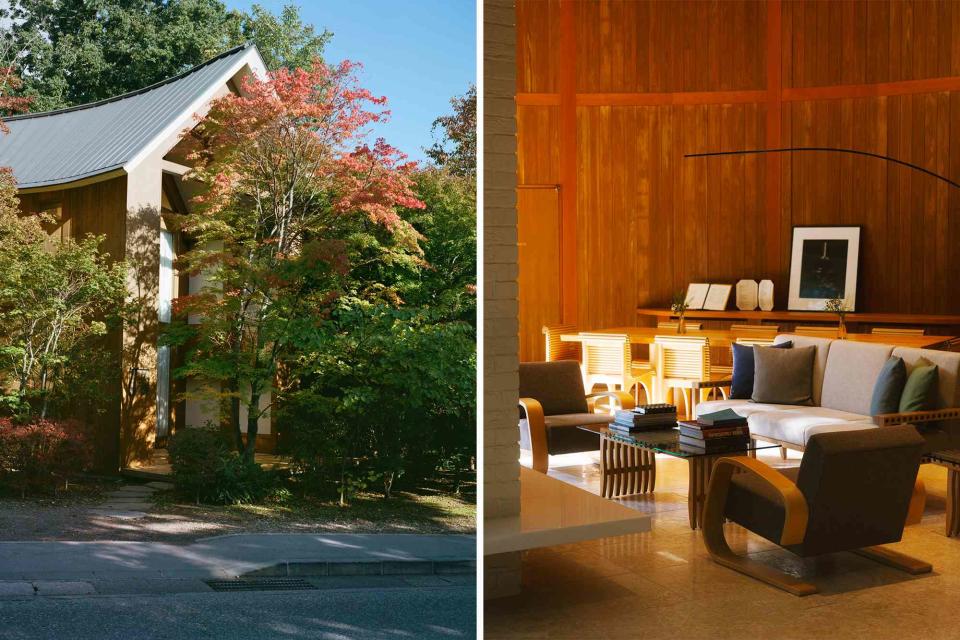
Max Houtzager
From left: Shigeru Ban's Shishi-Iwa House No. 1; the shared lounge at the Ban-designed Shishi-Iwa House No. 2.In late winter, I met my mother and my aunt and traveled to the mountain resort town of Karuizawa, in Nagano Prefecture, a little over an hour from Tokyo by shinkansen. When we stepped off the train, the air was bracingly cold. We were surrounded by forest, gentle drifts of snow, and a rare and delicious quiet. Hovering over the landscape was stately Mount Asama, its summit tipped with white.
I had heard about Karuizawa for what felt like the entirety of my childhood. It was the place where my mother had gone on vacation when she was a child. Some years later, after my older brother was born, my grandfather purchased a weekend home there. Karuizawa has long been known as a retreat for wealthy families fleeing Tokyo’s summer heat. It’s where, in 1957, the Emperor Akihito and Empress Michiko famously met playing tennis. It’s also where Yoko Ono and John Lennon liked to vacation; Ono once described Karuizawa as “an old summer resort in Japan very much like the Hamptons, except it’s in the mountains.”
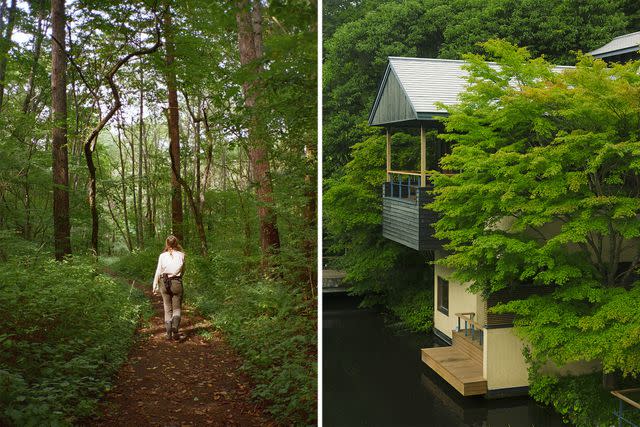
Max Houtzager
From left: A forest path near the Hoshinoya resort; riverside villas at the hotel.For our family, having a house in Karuizawa represented the pinnacle of a postwar story of ambition and aspiration. My grandfather was a self-made man who built a successful business in the 1960s and 70s. But he also experienced the 80s bubble and the 90s recession, when his company, like so many in Japan, went bankrupt. And while the family tried to hold on to the Karuizawa house as long as possible, they were eventually forced to sell it.
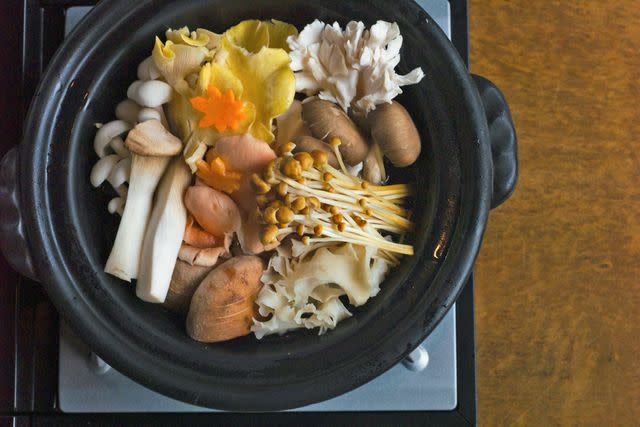
Max Houtzager
A seasonal mushroom hot pot at Hoshinoya, a century-old resort in the town of Karuizawa, Japan.As we drove away from the station, I could see skiers plunging down the slope at one of the nearby mountain resorts. In recent years, and particularly since the arrival of the bullet train, new hotels have opened up, tugging Ono’s “old summer resort” firmly into the 21st century. Several buildings were designed by renowned architects, and alongside the timeless allure of Karuizawa — the onsen, the forest walks, the wildlife, the occasional bit of gentle volcanic activity from Mount Asama — is a new and decidedly modern appeal.
We checked in to a hotel situated on this very fault line. Hoshinoya Karuizawa is both tied to the history of the town and the aesthetic paragon of a new wave of hotels. Hoshinoya was established as a simple ryokan and onsen more than a century ago, the first outpost of what became the Hoshino Resorts brand, which now extends across Japan and other parts of Asia. Since the Karuizawa property opened, Hoshino has passed through four generations of the same family. The original resort is now a sprawling collection of pavilions set beside a burbling river, accompanied by a natural onsen — a minimalist fever dream of a traditional ryokan.
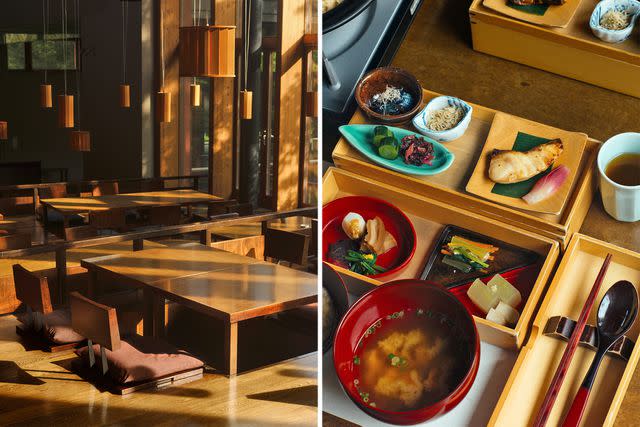
Max Houtzager
From left: The dining room at Hoshinoya; the hotel's bento-box breakfast.Within moments of arriving, we found ourselves swathed in robes, sitting on a terrace sipping hot tea and roasting mochi on our own hibachi. We spent the remainder of the day soaking in the baths and going on walks in the nature preserve, followed by a multicourse “alpine kaiseki” meal at Kasuke, the hotel restaurant — a parade of locally sourced dishes including steamed tilefish and sweetened scarlet runner beans, all beautifully presented. It would have been easy to spend the entirety of our trip within the grounds of Hoshinoya — and as my mother pointed out, the choice would not have been out of keeping with the spirit of Karuizawa, which is one of refined leisure — but the following day we ventured outside.
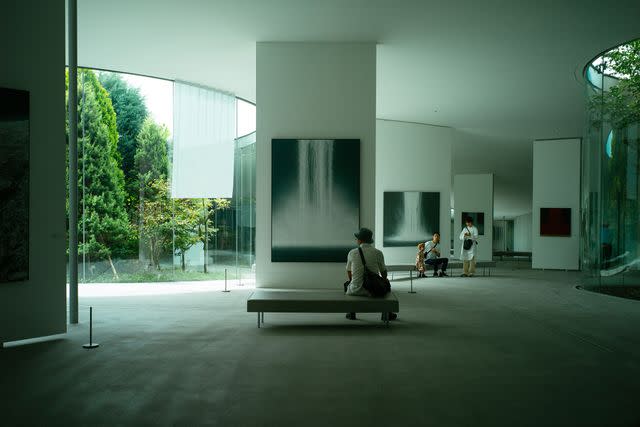
Max Houtzager
The Hiroshi Senju Museum Karuizawa, devoted to the artist's watercolors.Driving through the forests ringing Mount Asama, we saw second homes modeled after Swiss chalets. But we also saw strikingly modern structures: assemblages of concrete and glass peeking out from among the trees. American architect Kendrick Bangs Kellogg’s Stone Church is a marvel of organic form, as is a museum dedicated to the art of painter Hiroshi Senju by the Pritzker Prize–winning Ryue Nishizawa.
After two days at Hoshinoya, we moved to Shishi-Iwa House, a hotel with three separate buildings that showcase current Japanese design. Our rooms were in a sinuous structure by another Pritzker winner, Shigeru Ban, that curves its way through the forest landscape. A second, also by Ban, is a large and airy pavilion that holds the hotel’s restaurant and whisky bar; a third, by Nishizawa, is a playful take on Japanese machiya — traditional wooden houses. Sections of the building are connected by extensive engawa, covered outdoor corridors that look out onto courtyard gardens; the rooms have tatami floors and shoji screens. All three houses are filled with artwork from significant Japanese artists, as well as libraries of design monographs and journals.
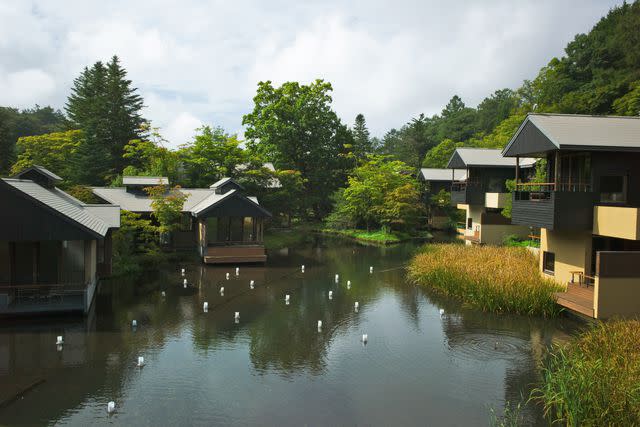
Max Houtzager
Lanterns on the river that flows through the Hoshinoya resort.Shishi-Iwa House also has Shola, what some consider to be the best restaurant in Karuizawa. We spent our last evening there, and in the warm, candlelit interior ate a procession of perfectly calibrated dishes, from a pork-jelly terrine on a cracker to a buckwheat risotto and a salad of 12 types of greens. Afterward, we visited the whisky bar, where the collection includes local malt whiskies dating back to the 1960s.
The following morning, we visited Shiongama, the studio of ceramist Shion Tabata. Situated in the forest and with unobstructed views of Mount Asama, it showcases Tabata’s unique tea-ceremony bowls, which are the products of years of study and a tradition dating back centuries.
Before going to the train station, we decided — half on a whim — to visit the family house, in search of another, more personal kind of heritage. Soon we were driving up into the forest.
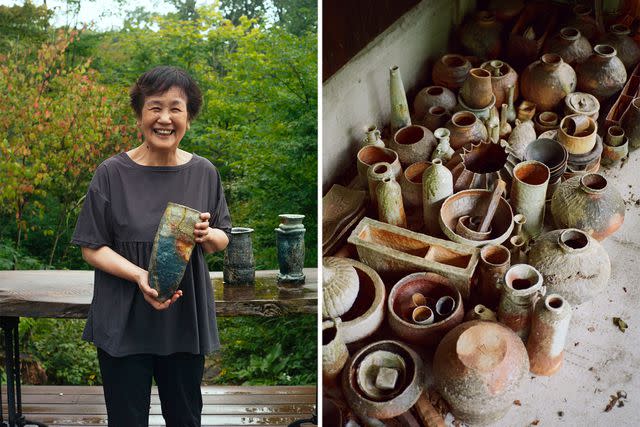
Max Houtzager
From left: Ceramacist Shion Tabata outside her studio; ceramics inside the studio.“It’s here!” my aunt called out to the taxi driver, pointing to a shoulder of the road. A stone staircase led up to a white house on a hill, half concealed by trees. We stood in the road and peered up at it. “They haven’t changed it,” my aunt said. “It’s exactly the same.” She spoke almost in a whisper. “I remember those stairs,” my mother said. “Going up and down with a baby…” She shook her head and laughed.
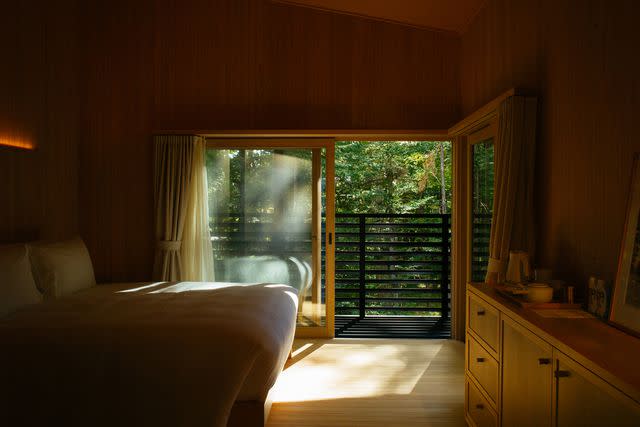
Max Houtzager
A bedroom at Shishi-Iwa House No. 3.“Should we go up?” I asked. My mother paused. “It’s someone else’s house now,” she said. We stood for a while longer and then, in near silence, got back into the car. As we headed to the station, I reached out to touch my aunt on the shoulder. “How do you feel?” I asked her gently. She was quiet, and then gave a firm nod of the head. “I feel good. It’s still there. That’s what counts.”
A version of this story first appeared in the May 2024 issue of Travel + Leisure under the headline "Changing Nature."
For more Travel & Leisure news, make sure to sign up for our newsletter!
Read the original article on Travel & Leisure.

